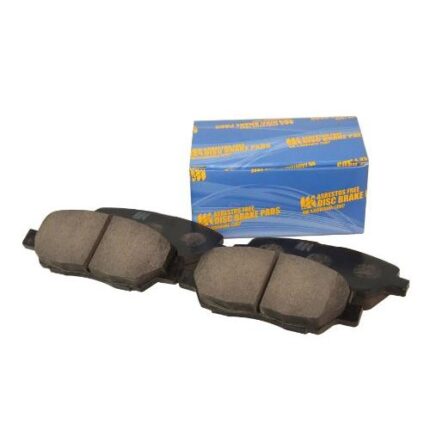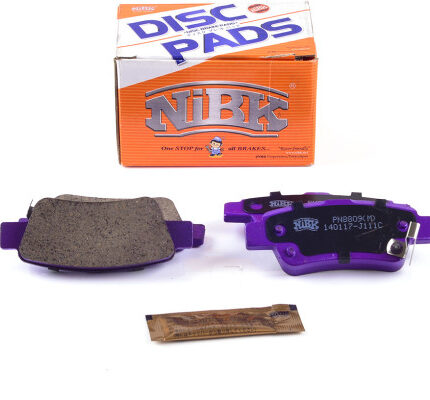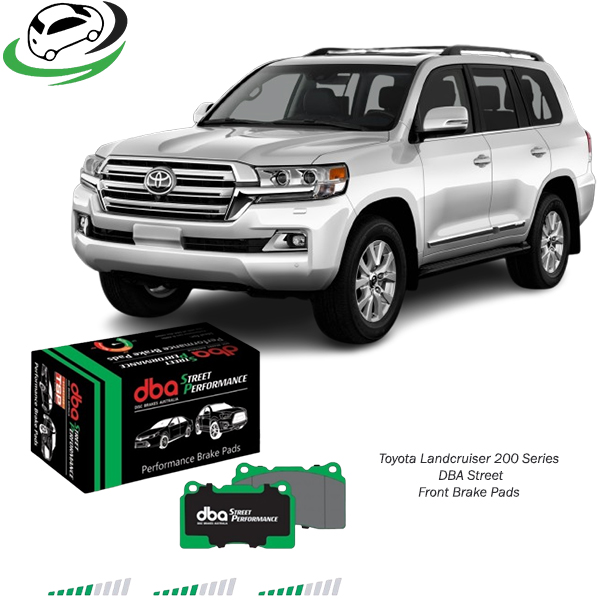-5%
Get Toyota Land Cruiser 200 Series Front DBA Brake Pads DB1838SP
Brake pads are a critical component of a vehicle’s braking system, essential for ensuring safe and effective stopping power. They are part of the disc brake system, which also includes the brake rotors (discs) and calipers. When the brake pedal is pressed, the calipers squeeze the brake pads against the rotors, creating the friction needed to slow down or stop the vehicle. Brake pads are made from various materials, each offering different performance characteristics.
Functions of Brake Pads
Brake pads serve several vital functions in a vehicle’s braking system:
- Friction Generation: The primary function of brake pads is to create friction against the brake rotors. This friction converts the kinetic energy of the moving vehicle into thermal energy (heat), slowing down or stopping the vehicle.
- Heat Dissipation: Brake pads are designed to dissipate the heat generated during braking. Effective heat dissipation is crucial to prevent overheating and ensure consistent braking performance.
- Noise Reduction: Quality brake pads are engineered to minimize noise during braking. They often include features like chamfers and slots, as well as shims, to reduce vibrations and prevent squealing.
- Durability and Longevity: Brake pads are designed to withstand the stresses of frequent braking. Their composition and design ensure they wear evenly and last for a specified number of miles before needing replacement.
Types of Brake Pads
There are several types of brake pads, each with its own advantages and disadvantages:
- Organic Brake Pads: Made from materials like rubber, glass, and Kevlar bound together with resin. They are quiet, produce less dust, and are relatively inexpensive. However, they tend to wear faster and may not perform well under extreme conditions.
- Semi-Metallic Brake Pads: Contain metal fibers (such as steel, iron, and copper) mixed with friction materials. These pads offer excellent performance, durability, and heat dissipation but can be noisy and produce more dust.
- Ceramic Brake Pads: Made from ceramic fibers, nonferrous filler materials, and bonding agents. They provide excellent performance, produce less dust, and are quiet. However, they are more expensive and may not be suitable for all vehicles, particularly heavy-duty applications.
- Low-Metallic NAO (Non-Asbestos Organic) Pads: These pads contain a small amount of metal and are designed to offer a balance between the benefits of organic and semi-metallic pads. They provide good performance and durability but can produce some noise and dust.
Signs of Worn or Failing Brake Pads
Recognizing the signs of worn or failing brake pads is crucial for maintaining vehicle safety and performance:
- Squealing or Squeaking Noises: High-pitched noises during braking often indicate that the brake pads are worn and need replacement. Many pads have wear indicators that produce this sound when the pads are nearing the end of their life.
- Grinding Noise: A grinding sound usually means the brake pads are completely worn out, and the metal backing is making contact with the rotors. This can cause significant damage to the rotors.
- Reduced Braking Performance: If the vehicle takes longer to stop or the brakes feel less responsive, it may be due to worn brake pads.
- Vibration or Pulsation: If you feel vibrations or pulsations in the brake pedal when braking, it could indicate unevenly worn pads or warped rotors.
- Thin Brake Pads: Visually inspect the brake pads through the wheel spokes. If the pad thickness is less than a quarter inch, it’s time to replace them.
Maintenance and Replacement
Regular maintenance and timely replacement of brake pads are essential for ensuring optimal braking performance and safety:
- Regular Inspection: Check the brake pads regularly for signs of wear. Pay attention to any noises, vibrations, or changes in braking performance.
- Timely Replacement: Replace brake pads when they are worn down to the minimum thickness. Ignoring worn pads can lead to rotor damage and more expensive repairs.
- Quality Parts: Use high-quality brake pads that match the vehicle’s specifications. Quality pads offer better performance, longevity, and noise reduction.
- Professional Installation: If you are not experienced with brake systems, have a professional mechanic install the new brake pads. Proper installation is crucial for safety and performance.
Replacement Process
Replacing brake pads involves several steps:
- Lift and Secure the Vehicle: Use a jack to lift the vehicle and support it with jack stands. Remove the wheels to access the brake components.
- Remove the Old Brake Pads: Unbolt the caliper and carefully remove it from the rotor. Slide out the old brake pads and inspect the caliper and rotor for damage.
- Install the New Brake Pads: Insert the new brake pads into the caliper bracket. Apply brake lubricant to the necessary areas to prevent noise and ensure smooth operation.
- Reassemble and Test: Reinstall the caliper and torque the bolts to the manufacturer’s specifications. Reinstall the wheels, lower the vehicle, and test the brakes by gently applying pressure while driving at a low speed.
Follow us on Facebook for more parts.



